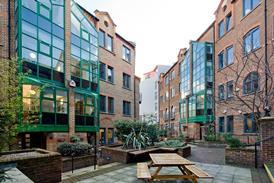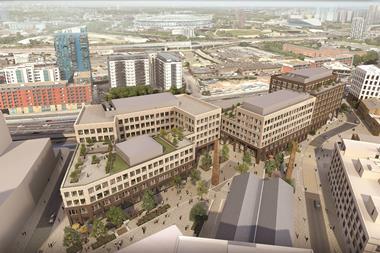It only took ecommerce penetration to reach 15% in the UK to ultimately reduce the value of retail real estate by more than one third between 2018 and 2020.

With a consensus view that most office-based companies will take a hybrid approach to home working after the pandemic, we can realistically expect average WFH days to increase from around one day per week to 2.5 day per week, equating to a potential fall in day-to-day office occupancy of 1.5 days per week. This potential reduction in corporate demand for offices is double the level of ecommerce penetration that led to a sharp correction in retail values, so should landlords of office space be worried?
Not necessarily. Retail and office businesses are fundamentally different. Bricks-and-mortar retailers all share the same business model – to sell products from a shop. The office by contrast is a unit in which to do business, but those businesses vary considerably.
What this means is when retail suffered from a structural shift, it was a systemic risk that negatively affected all bricks-and-mortar occupiers. By contrast the industries of most office occupiers have not been negatively affected by the pandemic. And rather than the structural shift to home working having a negative impact on their cashflow, it should improve it if they reduce their occupation through more remote working.
A further difference is that the relative real estate costs are far higher for retail than offices; so, reduced retail occupancy has a greater impact on the bottom line than reduced office occupancy. If an office occupier needs to save costs, its first call is nearly always to reduce headcount before office space. With most office-based companies in a healthy position financially, we’re not envisaging significant reductions in headcount leading to lower office requirements.
Instead, there will be reorganising and consolidation, as real estate teams accommodate more staff into less space. This will be gradual and new demand will negate some of the challenges caused by a shift to flexible working. While Covid will lead to longer-term shifts in occupation, this impact will be uneven.
War for talent
Office-based companies are recruiting again, and the war for talent in many sectors is as fierce as before the pandemic. The space they occupy to support growth will need to be accretive to the value of the company and the experience of the employees. Buildings will need to accommodate changing usage, moving from functional work spaces to being interactive and collaborative environments. The most relevant locations will facilitate a range of features that add value to the employee making the commute.
Many UK office buildings will not meet these criteria. Repurposing well-located city centre space to meet future demand can protect values. But in weak, secondary markets, particularly with poor transport connections, the outlook is less positive.
Deals in out-of-town locations without long, secure income streams are seeing far higher yields as void risk is priced in. UK business park returns in 2020 were -3.8% compared with -1.6% for offices, and we expect this under-performance to accelerate.
One exception is life sciences, where there is vast investor demand. This space is often on out-of-town business parks and there is a key differentiator between traditional office space.
The work done at a life sciences facility has to be within that highly controlled environment – traditional office work is much more transferable. And it is the more functional, workstation-led offices that are likely to suffer the most as we come out of the pandemic.
Zachary Gauge is head of real estate research and strategy Europe ex DACH at UBS Asset Management






























No comments yet